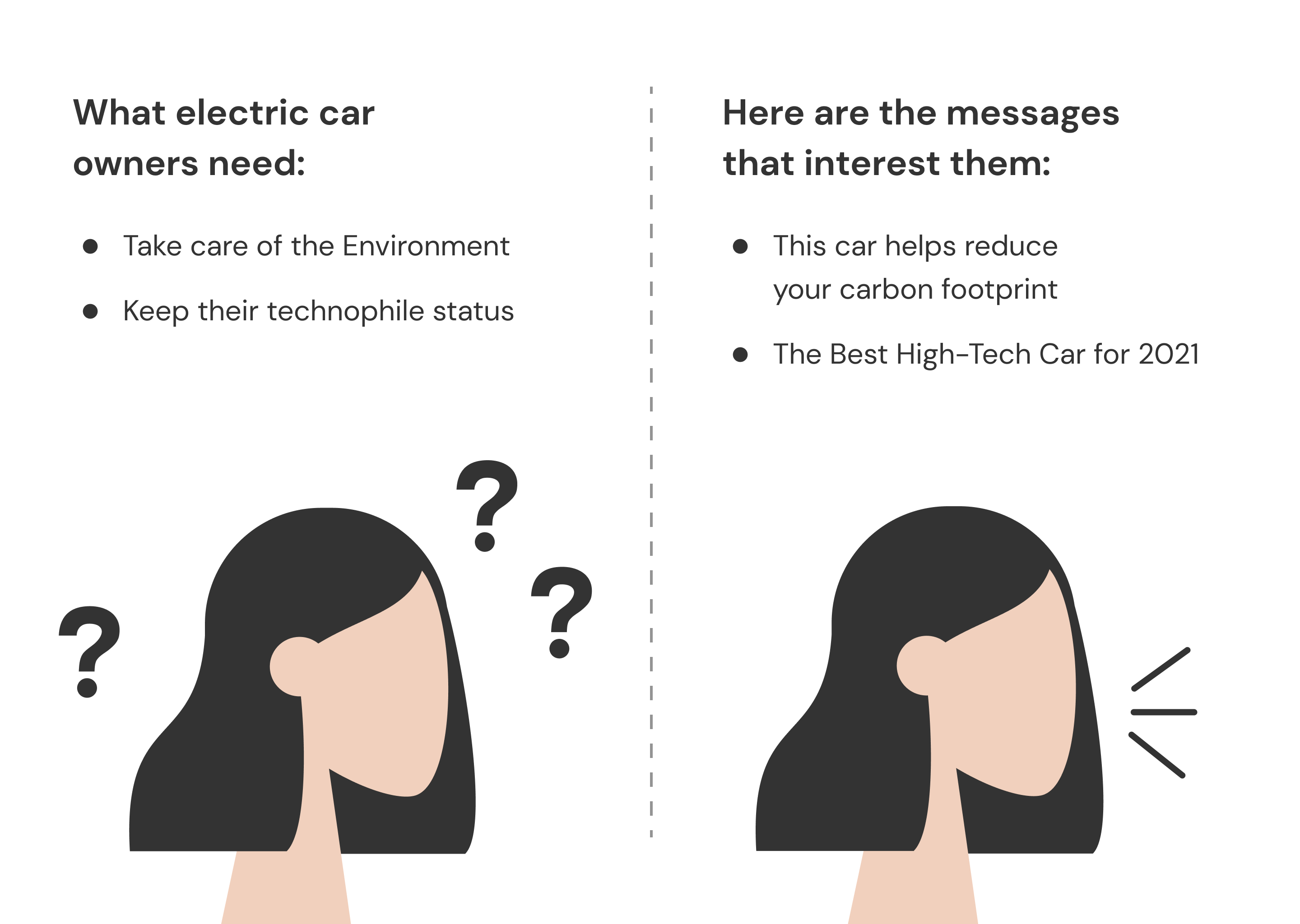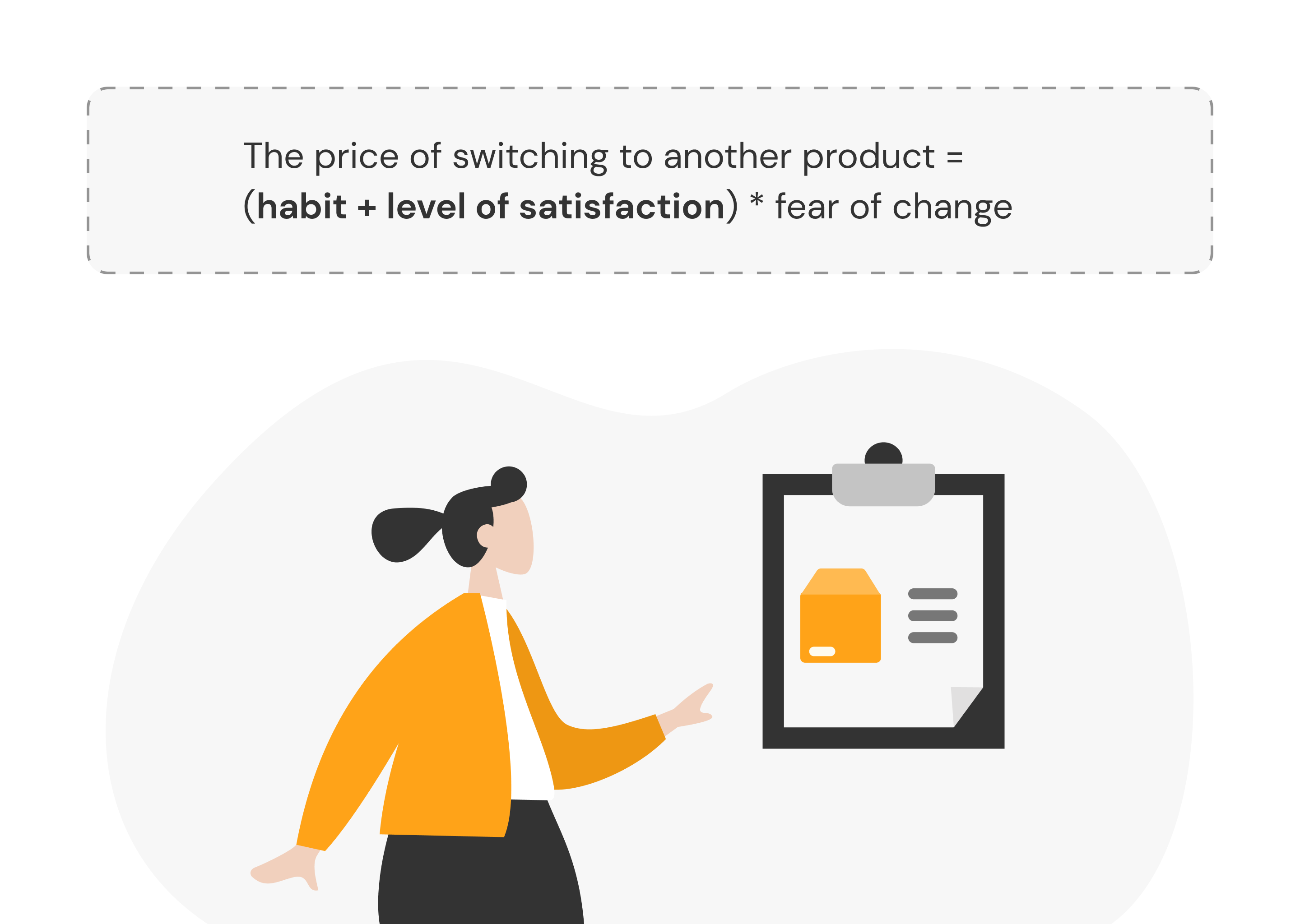You can create a fancy electric vehicle with all-wheel drive and AI – but it’s not enough to sell. Instead, you have to dig deeper and shift the focus from the product to the consumer.
The Jobs To Be Done concept handles this. Let’s figure out how it works to prevent the creation of unnecessary content or products.
“Most companies split their target audience into segments on the basis of user and product characteristics. However, users have a different view of the market. They just have a task (a job to be done), and they’re looking for the most appropriate product to help them solve it.” – Clayton Christensen, a professor at Harvard Business School.
The theory asks, “What job is your product hired to do?”
 The product you develop solves some problems – “does the job.” Customers buy or “hire” your product to perform a task, and as a result, they make their lives easier.
The product you develop solves some problems – “does the job.” Customers buy or “hire” your product to perform a task, and as a result, they make their lives easier.
For example, you are producing electric vehicles with a built-in computer. To understand how to sell such cars, ask yourself: what motivates people to buy the product? It is unlikely automatic seat heating or AI. All these things are additions that make the car more comfortable.

Before defining your customers’ needs and motivation, you must first determine who your customers are. We talked about this in one of our articles, which you can read here.
So when you understand who your client is, you can move on and understand their needs and motivations. A great way is to conduct in-depth customer interviews to gather valuable customer opinions.
Pro tip: use customer interviews to find out what people do in your product—don’t ask them to tell you how they might use your product.
An in-depth interview is often a one-on-one conversation, so there are a lot of opportunities to probe and uncover the real root causes of certain behaviors and beliefs. The result is not simply the superficial reason or thinking but the deeper considerations and contributing factors often beneath the surface.
Or, if you do not have the resources for such interviews, you can survey a mailing list. Then, offer customers to fill out a questionnaire – and give a discount promo code or checklist as a gift.
Here are some questions you can ask:
– What problem is the product helping you to solve?
– How did you solve that problem before you began using the product?
– Did you explore a variety of products before selecting the product?
One more thing to remember—people don’t purchase your product; instead, they switch to yours from a previous product.

The two Interpretations of Job to be Done are:
1. Jobs-As-Progress: a theory that Clayton Christensen, Bob Moesta promote.
The Jobs-As-Progress is when customers buy your product, hoping it will make their life easier or more pleasurable.
The JTBD framework provides you with a way to understand why someone buys your service or product. Understanding their pain points and desired outcome from this perspective helps you open new ways to think about your product or service.
For Example:
– Improving a commute when the customer buys a premium music subscription to make their road more pleasurable.
– Improving their home, when they buy new wall arts to make a place more welcome and cozy.
Performance metrics focus on whether the customer has accomplished their desired outcome with the Jobs-As-Progress approach.
To build an understanding of customer behavior, ask questions aimed at understanding people’s search to find solutions that fit their JTBD, such as:
– What other things did you try before trying our product?
– What did and didn’t you like about other products you tried?
2. Jobs-As-Activities: an ideology promoted by Anthony Ulwick and licensees of his patented Outcome-Driven Innovation.
The Jobs-As-Activities interpretation of JTBD is when customers buy a product to work. And your product is a tool to get tasks done.
Examples could be:
– Buying a new laptop to make my work routine more effective
– Reading an article, when the product is a tablet
And performance metrics are from the customer’s success: how effective have they been able to do the work they needed to do with your product?
You can get helpful feedback to explore things such as:
– Do novices struggle more with using your product to accomplish a certain job than experts?
– Is it possible to add particular inputs or outputs to your product to accomplish the job?
Why you should use the JTBD framework:
As we described, the JTBD framework provides a way to research your customer so you can identify their needs and outcomes.
The focus on outcomes ensures that you deliver only features necessary to help people get their job done. As a result, you avoid developing features that aren’t needed.
Pro tip: to find the right outcomes, establish some metrics you can use—in terms meaningful to your customers—to measure the impact of achieving those outcomes.
So, always think of your users. Think of the problems and needs of your users. And think of the issues and needs of your users and people who don’t use your products yet. Jobs To Be Done is a helpful framework that allows you to find your way around the data and understand the real needs of your users.
 Stop focusing on your product — focus on your user problems and help the users change their status to “done,” thus making their lives easier.
Stop focusing on your product — focus on your user problems and help the users change their status to “done,” thus making their lives easier.